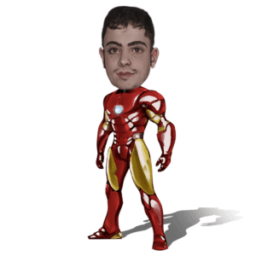Pond Dredging: Is It Worth It?
Over time, ponds often begin to fill as dead algae, leaves, and other organic material settle at the bottom. In a healthy pond ecosystem, aerobic (oxygen breathing) bacteria will break down all of this organic material quickly and efficiently. However, if a pond does not have adequate amounts of these decomposing bacteria to break down all the organic material, the pond will begin to fill, and its depth decrease. This will cause the pond bottom to become covered by a nutrient-rich muck-like substance. If this is allowed to continue for long enough the pond will ultimately begin to resemble a wetland or marsh. Once this occurs, many people hire contractors to dredge their pond.
Before any pond can be dredged, regardless of whether it is private or not, the pond has to receive certain permits (how many permits depends on location and extent of the dredging). Permits are necessary because under the Federal Clean Water Act and Amendments, the Corps of Engineers is required to regulate pond dredging in accordance with certain environmental criteria. The permits require information, including the quantity of materials to be dredged, the location, and condition of the disposal site, names and addresses of nearby landowners, and likely environmental impacts. The permits also require sketches of the pond dredging plan, disposal site, as well as before and after water depths. Because the pond depth is required the pond must be also surveyed – all of these things will add to the overall cost.
Pond Dredging Options
The most common type of pond dredging is long reach excavation. While this is often the cheapest way to dredge a pond, it is still rather expensive. On average it takes an experienced excavator operator two weeks to increase the pond depth by 1 yard in a 1-acre pond. The cost of renting a long reach excavator usually falls around $2,000 per week. Also the cost of hiring an excavator operator can come close to $200 per hour. Additionally, the pond must be dried before it can be dredged – this means any fish either must be stored or restocked, which only adds to the cost. Further, once the dredging is completed, the entire shoreline will need to be repaired due to being torn up by the excavator tracts. Landscaping costs will usually end in the thousands of dollars as well, likely pushing the overall budget in excess of $20,000-$30,000 (just for one 1-acre pond to increase its depth by about 3 feet).
A hydraulic dredge can also be used to dredge ponds, but at a high price, as making a 1-acre pond 1 yard deeper costs more than $50,000. Hydraulic dredges float on the water and work like a vacuum as they suck up the sediment on the bottom of the pond as well as the water. The slurry (solid and water mix) is then pumped away through a temporary piping system. Not only will using hydraulic dredging cost tens of thousands of dollars, but it is also incredibly inefficient as around 90% of the slurry pumped away is water. This means that to pump away 1 cubic yard of solids takes about 3000 gallons of water. The pumped away water is retained in a holding area while the solids settle to the bottom, and then the water is pumped back into the pond.
Alternatives to Pond Dredging
Because dredging is so costly, it should only be implemented when it is absolutely necessary. That being said, the best option is to prevent the need to dredge from the start. This need to dredge your pond can be eliminated by using proven pond management techniques. For instance, in the event that your pond is covered in sludge/muck/sediment, it has been observed that ponds using diffused aeration systems can increase depth by up to 8″. They are able to accomplish this in a few ways – one is by adding oxygen to the water, which allows the aerobic bacteria to flourish and decompose the sediment.
However, more is needed to properly treat and prevent sediment buildup than oxygen. Some pond aerators can also create a turbulent mixing action within the water column. This mixing is important because it stirs up existing sediment and thrusts it into the water column where it is then broken down by decomposing bacteria. (MARS Aerators have been used at wastewater facilities where sludge levels decreased by up to 2 feet) This process not only can decrease the amount of sediment present in your pond, but it will also prevent it from returning so that pond dredging will never be needed in the future.
water fountain
#Pond #Dredging #Worth
Will be pleased to have you visit my pages on social networking .
Facebook page here.
Twitter account is here.
Linkedin account here
Post byBedewy for info askme VISIT GAHZLY

